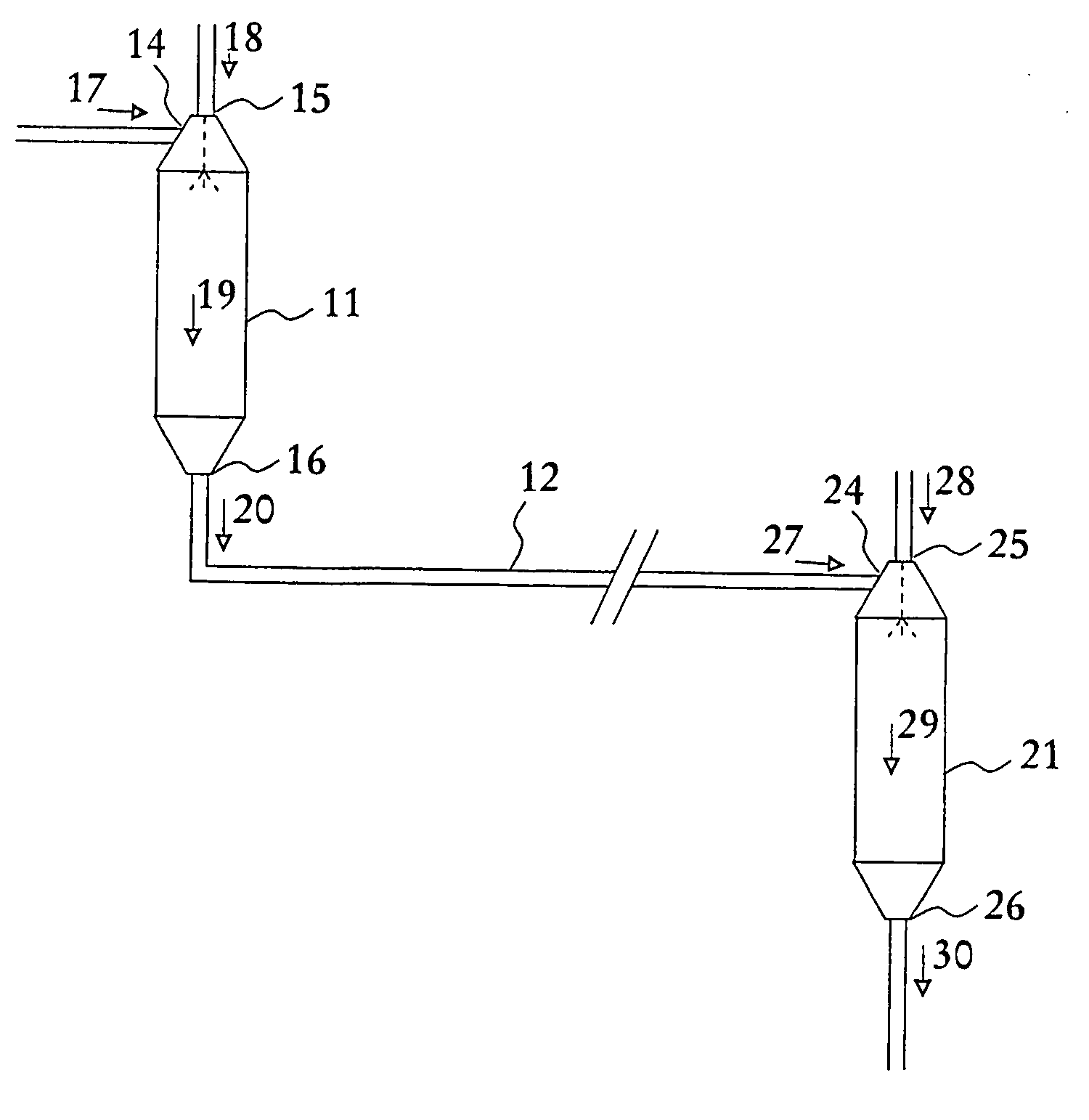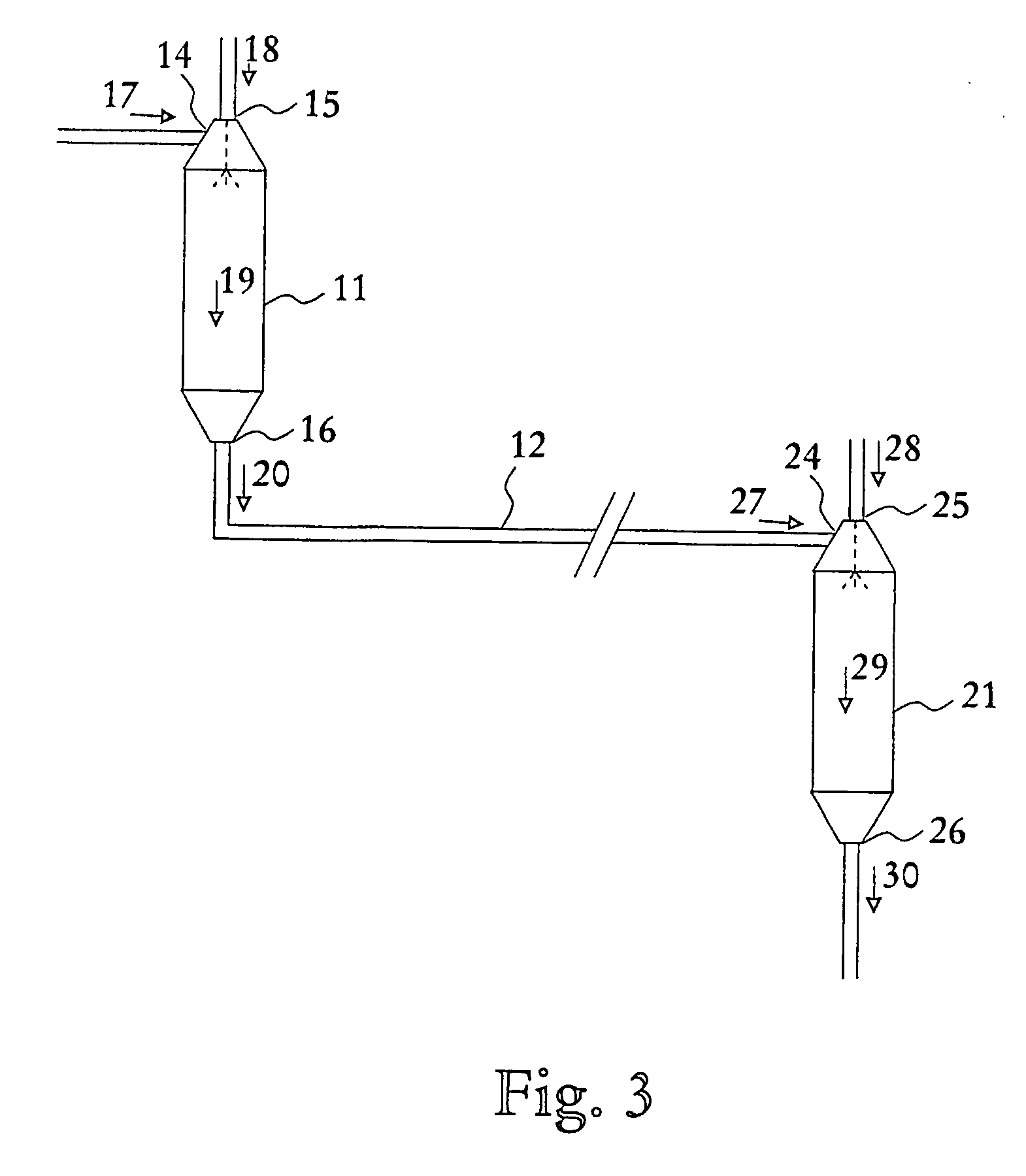Reactor and Method for Supercritical Water Oxidation
- Summary
- Abstract
- Description
- Claims
- Application Information
AI Technical Summary
Benefits of technology
Problems solved by technology
Method used
Image
Examples
Embodiment Construction
[0020] A reactor for supercritical water oxidation according to a first illustrated embodiment of the present invention is shown in FIG. 1. The reactor comprises an essentially vertical reactor section 11, and an essentially non-vertical reactor section 12. The non-vertical reactor section 12 is preferably substantially horizontally arranged.
[0021] The vertical reactor section 11, which may be referred to as a bulk or reservoir reactor, is preferably substantially cylindrical having a diameter D, and the non-vertical reactor section 12, which may be referred to as a tubular reactor, is preferably substantially cylindrical having a diameter d, which is substantially smaller than the diameter D of the bulk reactor 11. In other words, the vertical bulk reactor section 11 has a cross-sectional area which is substantially larger than the cross-sectional area of the non-vertical tubular reactor section 12. The cross-sectional area of the bulk reactor section 11 may be at least two times,...
PUM
 Login to View More
Login to View More Abstract
Description
Claims
Application Information
 Login to View More
Login to View More - R&D
- Intellectual Property
- Life Sciences
- Materials
- Tech Scout
- Unparalleled Data Quality
- Higher Quality Content
- 60% Fewer Hallucinations
Browse by: Latest US Patents, China's latest patents, Technical Efficacy Thesaurus, Application Domain, Technology Topic, Popular Technical Reports.
© 2025 PatSnap. All rights reserved.Legal|Privacy policy|Modern Slavery Act Transparency Statement|Sitemap|About US| Contact US: help@patsnap.com



